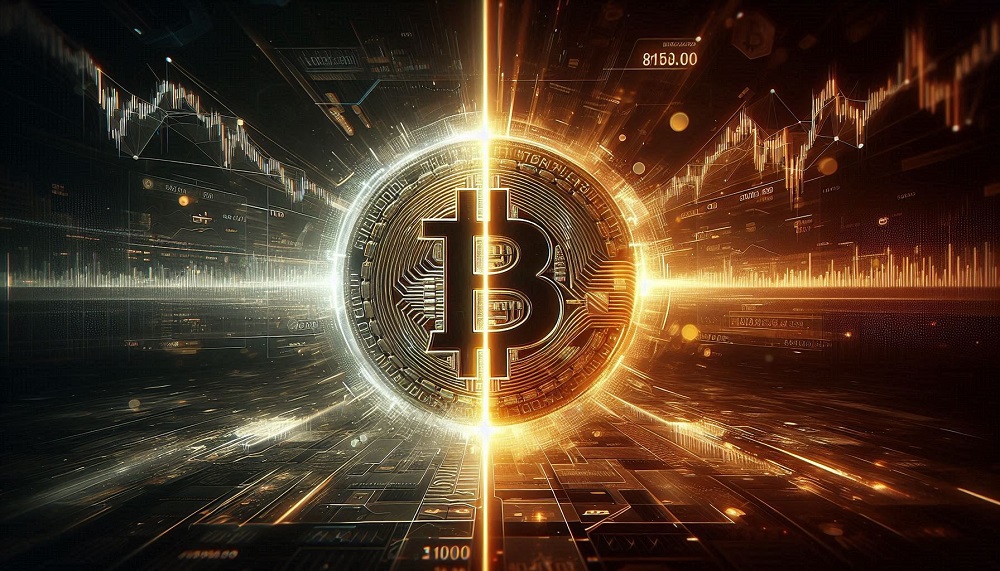Bitcoin halving is the process in which the reward for Bitcoin mining is cut in half. Bitcoin Halving takes place after every four years.
The halving policy was written into Bitcoin’s algorithm for counteracting inflation by maintaining scarcity. According to this theory, the reduced pace of Bitcoin means that the demand will remain constant even if the price increases.
Block rewards are a crucial part of the blockchain’s automatic process. It validates the transactions and opens new blocks, which is called Bitcoin mining. Miners who compete in a puzzle, are given new Bitcoins if they are the first to solve it correctly. Later, their block is added to the blockchain. They receive a reward for solving the puzzle and the race begins again.
How does Bitcoin halving work?
To understand the Bitcoin Halving process, first, we need to understand exactly what Bitcoin mining is.
Bitcoin uses a proof-of-work system for the validation of transacted information. In this system, miners use computers or specialized mining rigs to join the Bitcoin network and act as both transaction processors and validators.
Once a block is filled with transactions, it is closed and sent to a mining queue, where miners compete to become the first puzzle solvers. When the miners confirm the transactions in a block, they open a new one and receive a reward for their work.
This process creates a chain of blocks containing information creating blockchains.
In each of the halving events, the reward for these network contributors is slashed by half. This slows down the pace at which new Bitcoins are introduced into circulation.
Why is Bitcoin halving important?
The Bitcoin’s value will rise by halving in case of issuing free Bitcoins over time, assuming consistent levels of demand. This is in sharp contrast to fiat currencies, which typically decline in value over time via inflation.
In short, the halving is one of the ways Bitcoin’s protocol maintains scarcity, and scarcity is one of the reasons why Bitcoin is sought after by millions of people.
Should you invest in Bitcoin during a halving?
Halving sets a high expectation after every event as the prices generally trend upward after it. However, the trend moves slowly, over months and years until the next halving. There is no such guarantee that Bitcoin will follow the same trajectory. So, whether you invest in Bitcoin before, or after a halving depends on market conditions at the time.
How does Halving influence Bitcoin’s price?
Bitcoin miners say that Bitcoin’s scarcity gives it value. The lower the supply of a commodity, the price will automatically rise when people try to buy more. Bitcoin is no different than that. Others debate about the logic, observing that any impact would have already been considered in the price.
The Bitcoin’s supply to the market goes largely to crypto miners. The Bitcoin sector is opaque. With the selling of reserves by miners, the price tends to get lower.
When was the First Bitcoin Halving?
The first Bitcoin halving occurred in November 2012. The next halving was held in July 2016, and the recent halving was in May 2020. The thing to notice is that there is a four-year gap between the, as stated earlier, Bitcoin Halving has a four-year gap in it.
The reward, or subsidy, for mining, started at 50 BTC per block when Bitcoin was released in 2009. Every time the new halving takes place, the amount drops in half.
When is the next Bitcoin halving?
The halving process is based on a certain block creation, as the Bitcoin algorithm dictates. Nobody has an idea of when the next halving will occur. Experts point to four years since the last one. The predictable nature of Bitcoin halvings was designed in such a way that it’s not a major shock to the network.
But that doesn’t mean there won’t be a trading frenzy surrounding Bitcoin’s next halving.
Frequently Asked Questions
Q. Why does Bitcoin have halving?
A. The primary goal of halving is to regulate the inflation rate of Bitcoin. By diminishing the rate of new coin production, halving guarantees that the supply of Bitcoin grows at a progressively slower pace until the total cap of 21 million coins is achieved. This limited availability aims to establish Bitcoin as a reliable store of value.
Q. Does the halving affect the amount of Bitcoin?
A. The halving solely impacts the rewards allocated to miners for generating new blocks and does not alter the quantity of Bitcoin you possess in your wallet.
Q. Is Bitcoin halving good or bad?
A. From a long-term viewpoint, the halving mechanism is typically regarded as advantageous for Bitcoin’s value as a deflationary asset, enhancing its scarcity. While it may pose short-term challenges for miners, it can yield long-term benefits if Bitcoin’s price rises. Historically, it has catalysed investors’ price growth but also brought about phases of speculation and volatility.
Q. Should I buy Bitcoin before the halving?
A. Although halving events may lead to potential price increases, they can also result in increased volatility as the market responds to the occurrence. Investors purchasing bitcoin ahead of a halving event should brace for immediate price fluctuations that may differ from their predictions.
Q. How many Bitcoin halvings are left?
A. Bitcoin’s monetary policy permits a maximum of 32 halvings, of which three have occurred since its creation. Consequently, 29 halvings are remaining, equating to approximately 116 years.
Conclusion
So, by this, we can conclude that Bitcoin halving is one of the branches to understand Bitcoin’s nature more clearly. It is important to have this knowledge that enables the miners to be more cautious about mining. This article also sheds light on the importance of Bitcoin halving and how this process directly influences Bitcoin’s prices. The person interested in Bitcoin mining must read through all the topics discussed about Bitcoin and its related branches like Bitcoin Halving.

